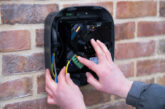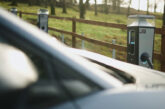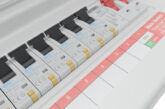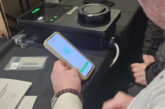
Jake Hardcastle, Electrical Design Engineer at Thornley & Lumb Partnership, ponders why the use of VADs as a fire safety device continues to be ignored in some quarters.
BS 5839-1 clause 18 states that Visual Alarm Devices (VADs) should be provided for those who are deaf and hard of hearing, and that these should comply with clause 17.
LPCB CoP-0001 goes into further detail and clause 4.5.2 states VADs should typically be installed in bedrooms, sanitary accommodation and certain areas where people are likely to be alone, as well as areas of high ambient noise etc.
It is, therefore, a huge cause of frustration when I witness the many occasions where these Codes of Practice aren’t complied with.
An example case
I suppose I probably need to get a life, but I’ll assume I’m like most engineers in that I never switch off, and whenever I go anywhere, I find myself instantly observing lighting, emergency exit signage, fire alarm systems etc.
I recently stayed away for a night in ‘The Lakes’, in a suite where the building was remote from the main building and reception area. I immediately noticed that no VAD was installed in the very large bathroom. In my opinion, they should be in every hotel room and bathroom, not just a small percentage of them.
What happens when all UA rooms are full? And why should it be relied upon that those with hearing impairments will make this known via a booking form? In the situation/example that I’ve described, the question was definitely not asked when I made the booking.
Does it take someone with a hearing impairment to be in this room alone – in the shower, with the bathroom door closed – to be unaware of a fire alarm activation and for the worst to happen for an establishment to fully comply?
The same goes for motorway services, gym showers, etc. – so often I see there’s not enough VADs installed, and where there is, they’re almost always incorrectly sited. This deviates from the LPCB CoP-0001, Section 4.6.9 (Selection, Siting and Spacings), Subsection 4.6.9.1, subparagraph E, which’s states:
‘Wherever possible, VADs should be sited such that all occupants of the room can have a clear line of sight of the device. Where, due to the specific usage of the space or fixed obstructions within it, direct line of sight cannot be achieved, the selection and siting of VADs should be such that the required level of illumination is provided on appropriate adjacent surfaces, taking into account the reflectivity of such surfaces’
A single VAD in a changing room, shower area or multi-cubicle toilet is evidently not enough, and the required illumination will not be achieved. It’s also likely that even one additional VAD over the row of cubicles is not enough, given it would be out of the line of sight of a number of cubicles down and would probably not achieve the required illumination level in these cubicles.
The coverage area defined, depending on the category of VAD (W, C or Open) would be compromised by the cubicles and the 0.4 lux would likely not be achieved unless one was placed over every third cubicle (at least) so they’re at least always in the line of sight.
Section 4.6.7 of CoP-0001 (FIELD OF VIEW) requires designers to take into account any partitions or obstructions.
This states that BS EN 54-23 requires the manufacturer to declare the coverage volume (volume where the required intensity is achieved) of the VAD. Consideration should be given, however, to the presence of any obstructions, such as partitions or furniture that could affect the actual VAD coverage. This section also states:
‘At any position within a space where a VAD is required, any individual should be able to view its light directly or reflected from adjacent surfaces.’
Often the fire alarm designer will not be able to confirm that any reflected light will be able to be viewed either from one VAD in a large area, as more often than not, lighting levels, cubical heights, and colour of surfaces will not be known at the time. It isn’t acceptable to assume the best case scenario for all of these factors, instead the worst case must be assumed, and the design completed on this basis.
Of course, I appreciate that the cost implications and the high number of loops or panels required in some premises to achieve this would make it seem like overkill and not feasible. But, ultimately the question comes down to what’s most important, or do we simply have to wait for a tragedy to occur first?
The case for VADs
In conclusion, sources make it clear, that to avoid discriminating against disabled people, BS EN 54-23 compliant VADs MUST be installed in all sanitary accommodation (not just WCs) and all hotel bedrooms, student accommodation and similar properties, so why do we never see this?
I believe every bathroom (and bedroom) should have a VAD installed, and at the very least, every shower and toilet space should have at least one provided over the cubicles. Even if one VAD was used over a row of, let’s say, ten cubicles, it may not technically be enough but it’s better than just providing one in the open area of a public toilet/shower.
Read more industry feature articles here









